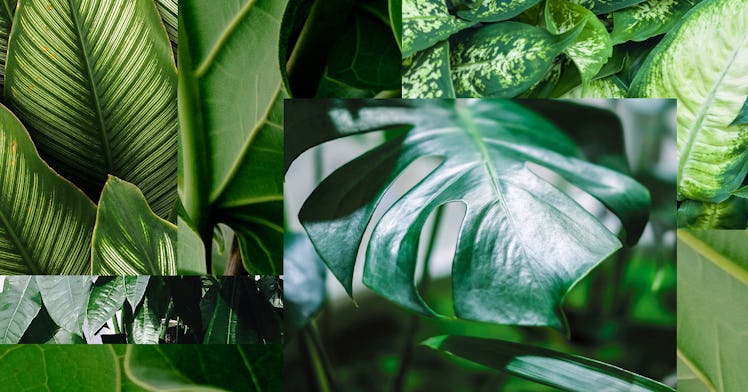How Many Houseplants Does It Take To Clean Your Air? 1,000 Per Room
A lot of pen has been put to the idea that houseplants can "clean the air" in our homes. The idea is based on sound science, but the interpretation is all wrong.

Along with greening up our living rooms and workspaces, houseplants have been shown to elevate mood, sharpen mental focus, and even boost productivity. Plants are also hyped as being all-natural indoor air purifiers, cleaning the air and sucking up airborne toxins that make us sneeze, wheeze, and develop cancer — well, that’s what an infamous 1989 NASA study led us to believe, anyway.
The reality: Potted plants don’t work like living HVAC devices, neutralizing nasty chemicals to help us breathe easy. It would be awesome if that were true, but experts today say it’s simply a myth. Despite what old research implied, houseplants have very little if any impact on indoor air quality.
The NASA study that launched this whole idea is an interesting and well-executed study. Thirty years ago, government researchers were trying to find ways to purify the air of their space stations, and they discovered that greenery could do the trick. They found that ficus, daisies, mums, and other plants could pull cancer-causing volatile organic compounds, or VOCs, such as benzene and formaldehyde, from these airtight environments. Later laboratory studies showed similar effects, cementing houseplants’ rep as efficient air cleaners.
But it turns out their effect was overblown. “The main issue with the NASA study — and other chamber studies of potted plants and VOCs — isn’t that the data are incorrect,” says Michael Waring, Ph.D., associate professor of environmental engineering at Drexler University. “Rather, the interpretation of the data and its application to indoor air cleaning are flawed.”
According to Luz Claudio, Ph.D., an environmental medicine and public health scientist at the Icahn School of Medicine at Mount Sinai, common houseplants can indeed draw certain VOCs out of the air — but the degree to which they do so is negligible. “The amount that houseplants may reduce chemicals in a real-world environment is likely not enough to have a noticeable impact on human health,” she says.
That brings up another big issue with past research: Chamber studies, conducted in airtight laboratories such as a NASA space station, are not real-world environments. The buildings we live, work, or play in are ventilated, not airtight. They have continuous indoor-outdoor air exchange, which has a much greater impact on VOC concentrations than houseplants ever could. “Chamber studies have shown weak removal of VOCs by potted plants,” says Warring, “just not at high enough rates to clean indoor air effectively compared to air exchange.”
On top of that, most of the lab studies that lauded plants’ purifying effects measured only one or two chemicals at a time. “But in a home or office, there are mixtures of many different chemicals at different concentrations, which change all the time depending on exchange with outdoor air and [objects] in the home or office that emit these chemicals,” Claudio says. Furniture, wall paint, carpet, and curtains, for example, can off-gas formaldehyde, benzene, and other toxic VOCs.
To be fair, other smaller studies have examined the air-cleansing role of potted plants in real-world environments, and they’ve also found positive effects. But these trials, too, are problematic because most failed to account for a key factor. “The field studies typically did not measure the air exchange rate — the frequency with which indoor air is replaced by outdoor air,” Waring says. “Because that parameter wasn’t measured, changes in VOC concentrations can’t be ascribed to any particular removal mechanism.” In other words, we can’t conclude from the results that potted plants were responsible for improving the air.
If you were to try to rely on plants’ minimal toxin-scrubbing abilities to purify indoor air, Waring warns you’d be drowning in plants. Let’s say you have a 10-foot-by-10-foot bedroom or office with an 8-foot-high ceiling. In order to match the air-cleaning capacity of a standard ventilation system, you’d have to pack that space full of 1,000 plants, he says. That shakes out to 10 plants per square foot of floor space. Welcome to the jungle.
The bottom line: Go ahead and fill your home and office with greenery. Potted plants will beautify your space and can benefit your mood and productivity, so why not? Just don’t expect pristine, pollutant-free air as a result. If you really want to improve air quality, your best bet is to pick up a dust rag, bust out the vacuum cleaner, change that gunky air filter, and open a few windows.